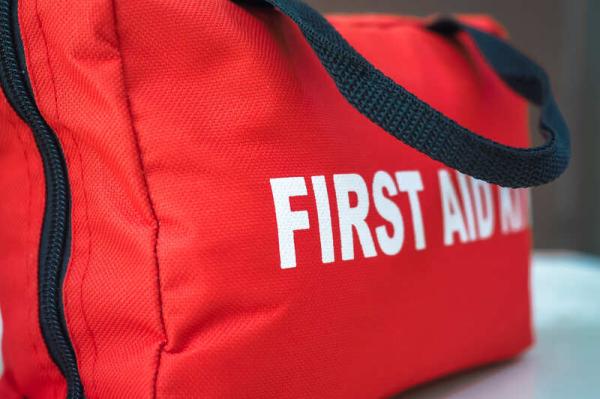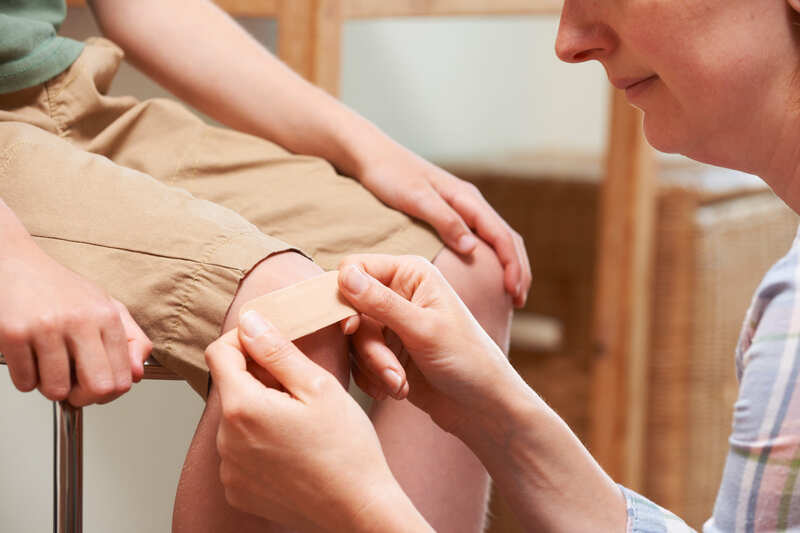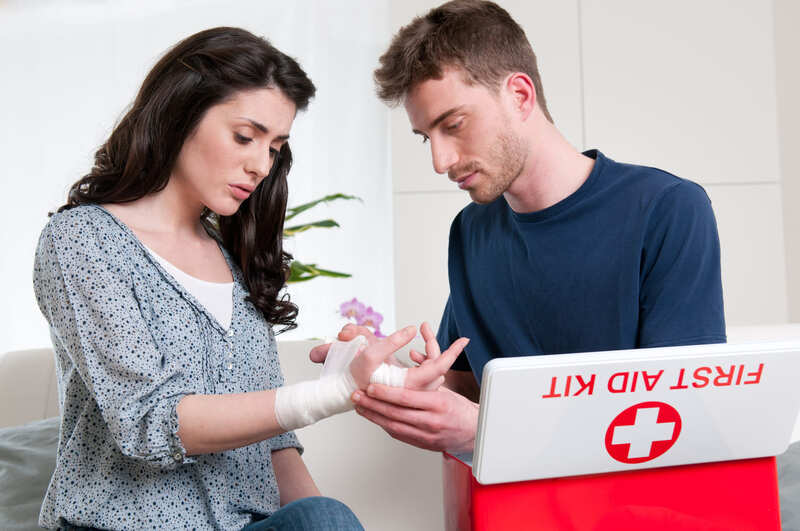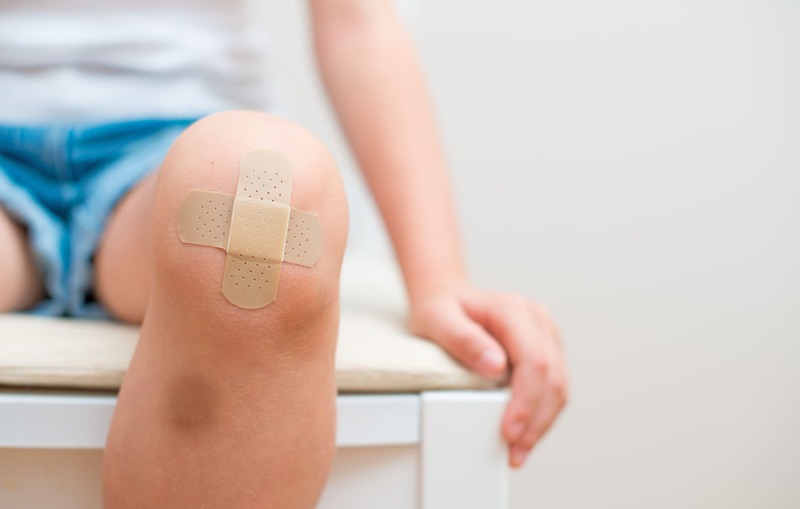Blog Post
First Aid Course: Fill Your First Aid Kit

Taking a first aid course is something everyone should consider. With first aid training, you will be able to respond to emergency situations effectively, armed with the right knowledge and expertise to handle the stress. For those who have undergone first aid training, or are interested in getting started, keep reading for a brief guide to filling your first aid kit.
If you are interested in taking a first aid course, EMCARE has got you covered. We offer accredited and professional first aid training that will equip you with everything you need to know to offer first aid in emergency situations. In this quick read, we will be highlighting some of the most important items to include in your first aid kit at home.
If you are eager to learn more about first aid, consider taking a first aid course with EMCARE and expand your knowledge today!
First Aid Course: The Basics
Basic first aid training that you will undergo with EMCARE enables you to act immediately in emergency situations and offer expert first aid care to anyone in a medical emergency. While a first aid kit and a certificate in first aid cannot solve every issue, it will allow you to manage an emergency situation until professional medical assistance can arrive.
Basic first aid involves essential medical emergency skills, including managing wounds and bleeding, head and spinal injuries, choking, burns, and fractures. First aid training and a fully-stocked first aid kit will help you manage these emergencies until help arrives.
In an EMCARE first aid course, you will learn how to examine and assess injuries, control excessive bleeding, alleviate trauma, and much more. But for now, here are some useful tools to stock in your first aid kit in preparation for such events.
Basic First Aid Supplies
A well-stocked first aid kit could mean the difference between life and death in emergency situations. Even if you have not undergone a first aid course, keeping a first aid kit around at home or in your car can help you quickly respond to injuries and emergencies. Here are a few essentials to include in your household first aid kit:
- Hydrogen Peroxide (disinfectant)
- Antiseptic Solution
- Antibiotic Ointment
- Hand Sanitiser
- Scissors and Tweezers
- Surgical Mask
- Thermometer
- Adhesive Tape
- Cold Press
- Elastic Wrap Bandages
- Cotton Swabs
- Disposable Gloves
- Bandage Strips

Personalise Your Pack
If you are building your first aid kit specifically for your own household or workspace, then it’s a good idea to tailor your items according to your family or colleagues’ needs. Here are a few factors to consider when stocking your first aid kit and how these factors can contribute to what you include:
Medical History: Consider the medical history of each family member or colleague when stocking your first aid kit. If someone in your household has a medical issue that could result in emergencies – allergies, diabetes, etc. be sure to keep appropriate supplies in your first aid kit.
Age Of Occupants: Another factor to consider is the age of the occupants of your home and the people who frequently visit, or the age of your colleagues. Consider the people your first-aid kit is organised for and cater to their possible needs.
For example, young children are prone to scrapes and cuts when tearing around the house, whereas older individuals are more prone to heart attacks. Packing accordingly will ensure that you are prepared should an emergency situation occur.
Environment: Lastly, consider your surroundings – where you live and work will determine what kind of injuries and emergencies are most likely to occur. From snake bites and rashes to seasonal allergies, your environment contributes a lot to what you will need to include in your first aid kit.
Update Your Kit Annually
Check your first-aid kit annually to make sure that all items are safe to use and haven’t expired. Frequently updating your first aid kit by removing and replacing anything that might be expired or old will allow you to administer first aid effectively.
Be sure to swap out expired medications for new additions, inspect any metal tools for rust and replace the batteries in any of your electronics. Lastly, don’t forget to replace items you have used throughout the year.

Take An EMCARE First Aid Course
Once you have your first aid kit well-stocked, why not sign up for a first aid course with EMCARE? You can expect to learn many practical and essential first aid skills including how to stop bleeding, cardiopulmonary resuscitation (CPR), and setting a splint. These skills cover the most common and life-threatening medical emergencies you may face.
With the right training and a decent first aid kit, you will have everything you need to manage these situations effectively. Our first aid courses are taught by qualified trainers with experience in emergency services and are designed to ensure students are equipt with the skills and confidence to take life-saving action in a medical emergency.
The four basic first aid courses that we offer include the following:
Basic First Aid / Refresher Course: This is a one-day course that covers CPR, burns, fractures, wounds and bleeding, head and spinal injuries, shock, unconsciousness, fainting, artificial respiration, choking, and legal implications and ethics relating to emergency care.
First Aid Level 1 Course: This course covers all of the first aid training included in the Basic First Aid / Refresher Course as well as an introduction to emergency care and increased competence in practical skills.
First Aid Level 2 Course: This course works as an addition to the First Aid Level 1 Course, functioning as an intermediate first aid course that provides extensive emergency care knowledge and teaches a high standard of patient care.
First Aid Level 3 Course: This is an advanced first aid course that covers additional emergency care situations, such as emergency childbirth or water-related emergencies. This first aid training is essential for workplace supervisors, those who work in hazardous environments, teachers and education professionals, security professionals, and first responders.
First Aid Course: Final Tips
While a first aid kit can help you out, and a first aid course can prepare you for emergencies, it’s important to know when to seek professional help. Not every accident can be treated at home, so don’t hesitate to head to call emergency services when necessary. Your first aid training and kit will allow you to minimise damages until emergency services can arrive.

GET IN TOUCH
There are a few ways to reach us below. Please feel free to contact us via phone, email or you can send us a message via the form provided and we will get back to you.




















